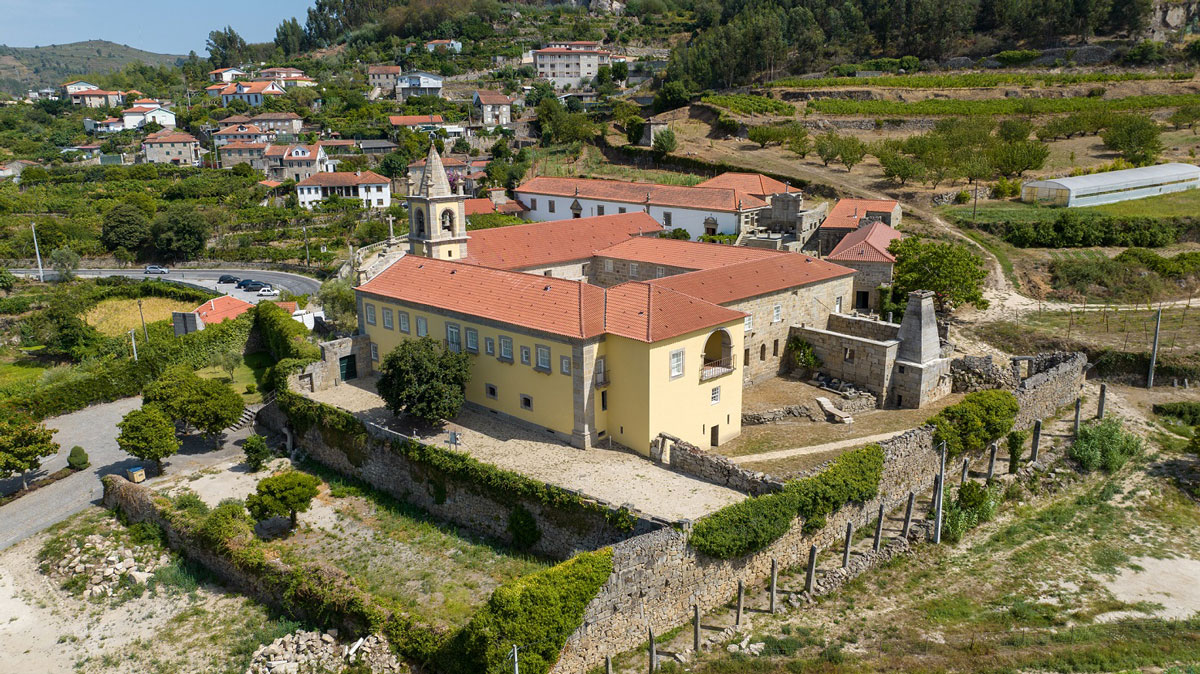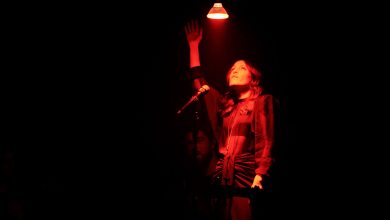On the 21st of April, the Municipality of Baião inaugurates the Monastery of Ancede Centro Cultural de Baião (MACC), whose requalification involved a total investment of 3.7M € to transform that Monument of Public Interest into the new Cultural Center of the Region, with the aim of attracting 16,000 visitors a year by 2025.
As it is a complex that includes several units, the Monastery simultaneously integrates projects by two architects – Siza Vieira, whose work is materialized in the Monastery, in the Casa dos Moços and in the Churchyard (in progress), and Daniel Vale, who signed the work concerning the Church. Already designed, but awaiting funding, are the granaries, the parking lot, the dovecote, the threshing floor, the fences, and the gardens.
The iconic Monastery whose origin predates the founding of Portugal has been the target, since 2001, of five stages of intervention, aimed at conserving, restoring, and rehabilitating the space in its various valences, currently providing it with a Cloister with a capacity for 300 people, the which is joined by an auditorium with 80 seats and exhibition spaces capable of hosting 25 people per hour, in addition to the outdoor area.
With the ambition of assuming itself as a strong tool for attracting visitors to the territory, MACC presents a modern, developed, provocative and daring Baião, which is proud of its traditions. As an asset on tourist routes, the Cultural Center has already scheduled the Green Marble 2023 conference on climate change and is also planning the presence of national and international musicians.
Requalify while maintaining the historical identity
The requalification of the Monastery of Ancede sought to maintain the greatest possible variety of marks from different time periods. The Romanesque monument presents a set of buildings that predate the formation of Portugal but also reveals evidence of the past of other buildings referring to the Roman period.
The most recognizable element of the Monastery is the rose window of the Church, clearly medieval or Romanesque, with elements from the Baroque, in which the Capela do Bom Despacho stands out.
The visit to the space has two components in the same building: on the ground floor the concept of a consolidated ruin and, on the first floor, the refurbished part with the exhibition and cultural spaces.
Recovering the life of the Monastery as a space for culture and science, the Baião City Council aims to ensure that the preserved historic spaces are used in the various possibilities of cultural programming, in any of the arts that are defined for those areas, with museographic design by GloryBox, whose programming takes place throughout the year with different exhibitions.
With four strategic axes of action, the MACC has a museographic component of memory of space and territory, in which artistic elements of high heritage value are integrated, such as the Flemish triptych from the 19th century. XVI by Jos Van Cleef will be exposed in the Sacristy, the medieval processional cross, and the chapel of Bom Despacho, an exuberant and unique example of the Baroque style in Portugal.
A collection of Sacred Art that includes paintings, various Christs, saints, a reliquary with the bone of St. Bartholomew, a processional cross, and a plate of alms from Nuremberg is part of the permanent collection of the Monastery of Ancede, as well as an exhibition with various objects that tell the evolution of the territory, from prehistory to the 17th century, such as arrowheads, necklace beads, ceramic vases, Roman macaws, Roman coins, medieval spurs, a reliquary with a holy head and a sheet of music Dominican of the century. XVII.
On the cultural side, the Monastery of Ancede is the new Cultural Center of the Region that presents a diversified program that proposes different approaches and art in various contrasts. From an educational point of view, the Roman nucleus identified in the farm that surrounds the Monastery serves as a starting point for archaeological studies and for greater proximity to the school community. At the same time, the scientific approach is carried out through growing proximity to the Academy, the production of knowledge, and the study of the place and the surroundings.
Supported by community funds from three lines of funding – the Endogenous Resources Enhancement Program (PROVERE), Cultural Heritage, and Community-Based Local Development (DLBC), the requalification was assumed in more than a third of the investment borne by the City Council of Baião.
Return identity to a local dynamic-generating center
For centuries, the Monastery of Ancede was a center that generated life – not only religious but also civil and artistic -, responsible for the settlement of population, and promotion of knowledge and culture, in the lands of Baião.
With this project, the Municipality of Baião completes a cycle of equipping equipment and infrastructure which, in the Municipality’s strategy, represents an important commitment to the population’s quality of life, in which the cultural component is of particular importance. A Cultural Center in Baião, facing the entire Region, is one of the pillars of local development, providing an opportunity to attract cosmopolitan, unexpected culture with a modern touch in a context of a tradition that Baião is proud of.
As a “Sustainable Tourist Destination”, Baião features assets such as nature and adventure tourism, the Serra da Aboboreira Regional Protected Area (together with Marco de Canaveses and Amarante), intangible heritage (Frende baskets, Gestaçô walking sticks, chanterelles, and enogastronomy ), activation of the archaeological heritage and, now, the Monastery and Ancede Cultural Center of Baião (MACC).
For the Municipality, the MACC represents a cultural center open to the world, with the national and international projection that attracts visitors and promotes local development. Sharing collections and knowledge with different audiences fulfills the objective of intensifying the creation of partnerships with museums, national institutions, and those from other countries.
13 hectares dedicated to wine and fruit and vegetable production
The farm that surrounds the Monastery of Ancede has a total area of 13 hectares divided between vineyard and vegetable garden, producing 8,500 bottles of “Lagar do Convento” – a wine from the Avesso variety intended for promotion – and vegetables and fruits that are channeled to social baskets, delivery to Private Institutions of Social Solidarity (IPSS), use in meals in the municipality’s canteen, sale of products at market prices locally or at Casa de Baião, in Porto.
Follow us on Facebook, Twitter, Instagram, Youtube, and TikTok and see the exclusive content for social networks.
Follow us on Facebook, Twitter, Instagram, Youtube, and TikTok and see the exclusive content for social networks.





